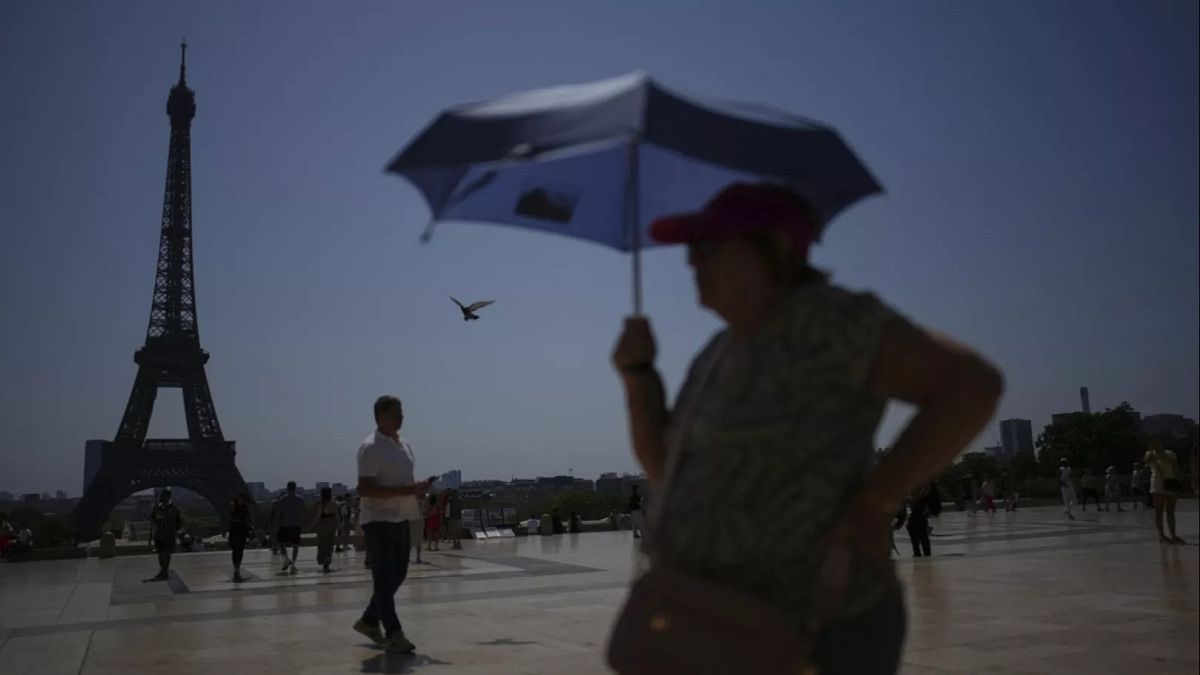In a recent post shared on X, France’s Minister of Culture Rachida Dati stated that “Paris is the deadliest European capital during heatwaves”, while in a spat with David Belliard, a Green candidate for the Paris 2026 mayoral race.
While Belliard accused the French government of failing to address climate change effectively, Dati claimed that the city of Paris—led by socialist Mayor Anne Hidalgo—had failed in its duties, despite having multiple climate action plans in place.
When it comes to assessing excess death rates, Dati’s claims are true, to a certain extent.
They can be traced back to a 2023 study, entitled “Excess mortality attributed to heat and cold”, and published in the medical journal The Lancet. It assessed excess mortality rates due to heat and cold across 854 European cities, based on data from 2000 to 2019.
While researchers found that London was the capital with the most excess deaths related to heavy spells of cold weather, Paris had the most excess deaths during heatwaves.
The 2003 heatwave in particular led to record-breaking temperatures and thousands of deaths in Paris.
It’s worth noting, however, that other non-capital cities have been identified as having higher excess deaths during heat spells than Paris, such as Milan and Barcelona, according to other studies.
What makes these cities vulnerable to heatwaves?
Large European cities often end up becoming “urban heat islands”—a phenomenon where urban areas experience significantly higher temperatures than the rural areas surrounding them.
This is because of the presence of man-made surfaces and materials, such as concrete, buildings, and pavements. They absorb and retain more heat than natural landscapes such as trees and bodies of water.
Paris and other cities like it also have high population density and comparatively few green spaces, the latter of which helps to reduce temperatures.
Ultimately, though, the root causes of severe heatwaves in cities are climate change and natural climate variability, according to experts.
“The temperature or the heat episodes in Paris and other cities in Europe are an outcome of the weather pattern influenced by natural climate variability, and human-induced climate change”, Malcolm Mistry, assistant professor in Climate and Geo-Spatial Modelling at the London School of Tropical Diseases, and one of the authors of the study, told Euroverify.
“Regions in Southern Europe and close to the Mediterranean Sea (that is also warming rapidly) are more prone to heatwaves,” he added.
“This is evident from intense heatwaves in recent years in Spain, Portugal, Italy, Greece and France, and at times, in late Spring or early Summer. In short, these are outside the influence of a city planner or political decision.”
Although authorities can work on urban planning projects to address climate change, other factors have a bigger influence.
“Local factors such as geography can play a role, but at the end of the day, a natural large-scale weather system can stall over a location, drawing warm dry air and making the place extremely warm for a short duration,” Mistry said.
The 2003 heatwave led to record-breaking temperatures, as well as thousands of deaths, but since then, governments have been working on how they deal with these crises.
“Many lessons have been learned, with further meteorological and heat-health warnings, heat-action plans, etc, being implemented in France and several other European countries”, Mistry concluded.
Read the full article here


